14+ Sample Learning Continuity Plan
-
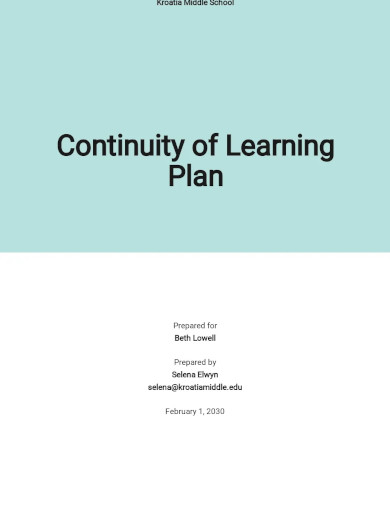
Continuity of Learning Plan Template
download now -
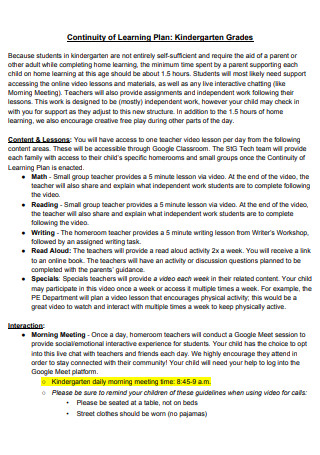
Kindergarten Learning Continuity Plan
download now -
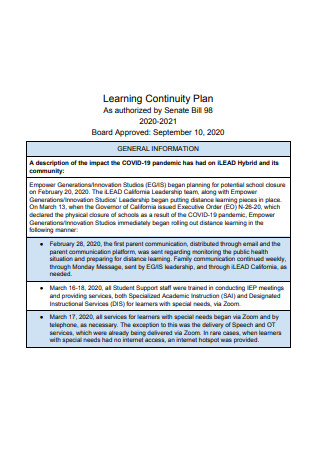
Sample Learning Continuity Plan
download now -
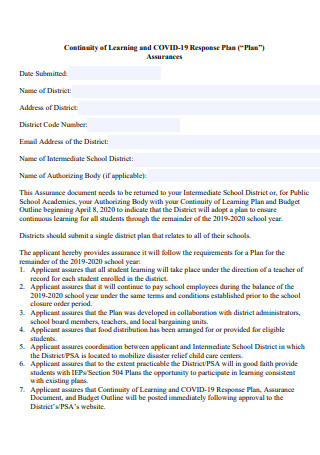
Continuity of Learning and Covid-19 Response Plan
download now -
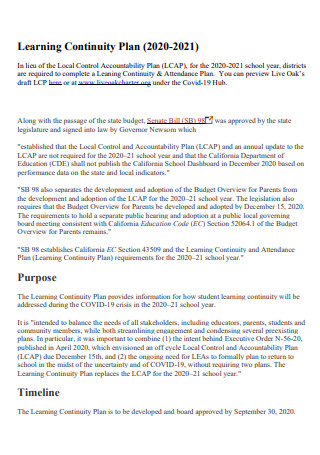
Learning Continuity Plan Example
download now -
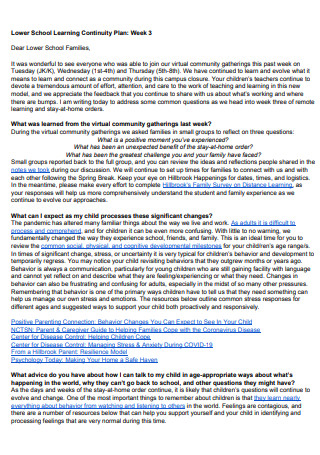
Lower School Learning Continuity Plan
download now -
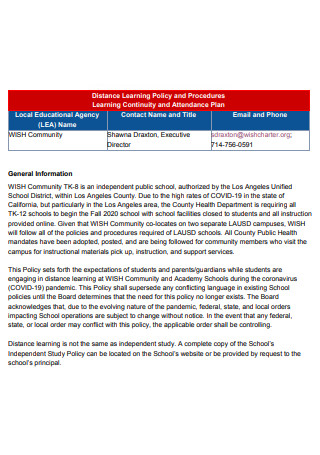
Learning Continuity and Attendance Plan
download now -
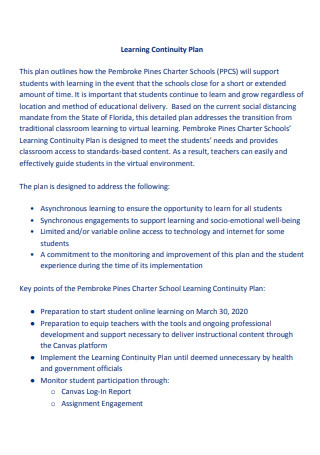
Printable Learning Continuity Plan
download now -
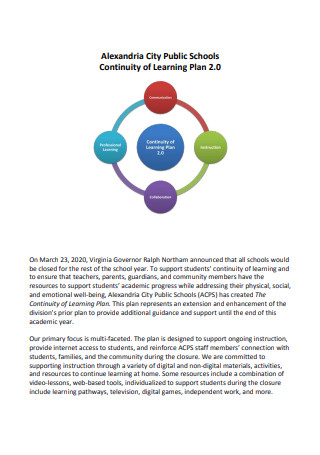
Public School Learning Continuity Plan
download now -
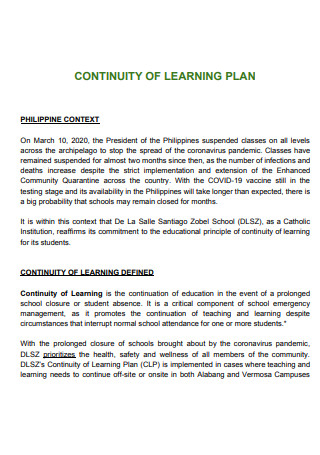
Basic Learning Continuity Plan
download now -
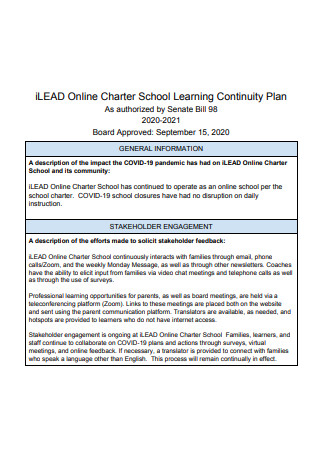
Online Charter School Learning Continuity Plan
download now -
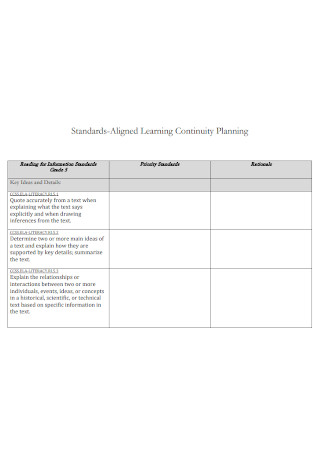
Standard Learning Continuity Plan
download now -
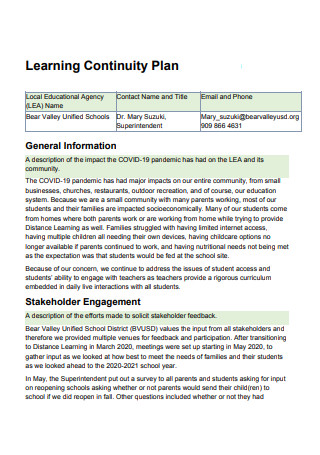
Formal Learning Continuity Plan
download now -
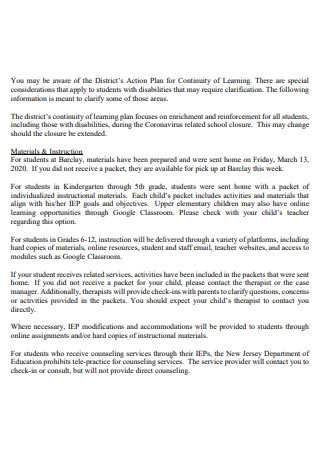
District Learning Continuity Action Plan
download now -
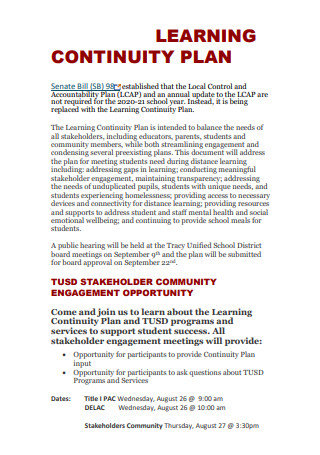
Simple Learning Continuity Plan
download now
FREE Learning Continuity Plan s to Download
14+ Sample Learning Continuity Plan
What is a Learning Continuity Plan?
How to Write a Learning Continuity Plan
Inside a Learning Continuity Plan During the Pandemic
How to Properly Implement a Learning Continuity Plan
FAQs
What is a Learning Continuity Plan?
What is the Importance of a Learning Continuity Plan?
What are the Components of a Learning Continuity Plan?
One effort that governing agencies that are centralized around education are doing is coming up with a Learning Continuity Plan that aims to help educational institutions to sustain substantial learning despite the occurrence of unforeseen disruptions, for example in this case, the COVID-19 pandemic, and ultimately to aid students, teachers, faculty and staff to rise up if it were to initially collapse against these impediments. In this article, you will learn what a learning continuity plan is, how it’s important to develop one and what should be included to make it effective. Read more below and avail of our learning continuity plan samples to create one of your own!
What is a Learning Continuity Plan?
Simply put, a Learning Continuity Plan, likewise known as a Continuity of Learning Plan or Education Continuity Plan, is a comprehensive and in-depth document that ensures learning continuity despite disruptions ranging from nature-induced disasters (ie., flood, hurricanes, typhoons, volcanic eruptions), fires and based on recent events, from health related issues like the pandemic.
It is not necessarily a preventive action plan but it does help in overcoming them. However, the ways of working around these impediments include a thorough analysis of what is happening therefore, objectives are initially laid out that encompasses what is to be covered rather than be purely methodological. This means that a learning continuity plan is grounded on the social realities of who needs it as opposed to applying the general approaches to overcoming academic interruptions meaning, learning continuity plans may come in a variety of ways with different inclusions that are unique from one another.
One of, if not the most important aspect of a learning continuity plan is the academic institutions’ plans for a safe resumption of classes under the usual learning context once the situation is settled and goes back to normal conditions.
With all that being said about what a learning continuity plan is, it just is indicative of the educational institutions’ persistence and determination to provide the quality of education that the student population should be acquiring all the while in the midst of an emergency. It’s a physical manifestation of how they continue to rise to the unprecedented challenge brought about by the pandemic. Not only the students, but the well-being of the faculty and staff, the backbone of the educational system, is also accounted for and must be taken into consideration while developing the continuity of learning plan.
How to Write a Learning Continuity Plan
1. Understand the problem.
When writing a learning continuity plan, it is first and foremost important to identify the obstacles you want to overcome and/or have to deal with in order to move forward academically. More than knowing what you are facing, it is also of primary importance that you understand it and this entails having to conduct a thorough analysis plans of the problem that its roots are determined as it should follow that you can now better come up with the appropriate approaches to resolving it.
2. Be clear with your objectives.
When you think about the purpose of a learning continuity plan, it’s easy to say that the purpose it serves is to simply continue education after having experienced a setback, be it minor or major. While that serves as its gist, it is important that you understand that it is still a shallow one once application is introduced in the picture. To address this and to better come up with strategies that are not superficial, it is important that you specifically identify what you want to achieve with your learning continuity plan. It shouldn’t be merely sustaining education. It has to be deeper than that and this should easily come to you if you successfully tackle where the problem is deeply rooted.
However, while we want to be ambitious with our objectives, we place emphasis on taking into consideration the available resources that will make it possible for these objectives to materialize. This way, if it needs resources that your learning institution cannot provide, a separate section to acquire sponsorships and donations or whatever is needed to actualize these academic aspirations can be detailed.
During this process of determining objectives, there is a checklist of some sort that makes this phase easier. The SMART goals Objectives Checklist encourages you to make objectives that are specific, measurable, achievable, realistic and are time-bound.
3. Establish the team structure.
It should be noted that in order for a learning continuity plan to be effective, it should be guaranteed that the people who are to implement and make use of it are competent enough to understand their duties and responsibilities to properly utilize it. Aside from identifying the focal persons, a detailed organizational chart setup should also be established so as there is proper maneuvering of the plan. Because most learning continuity plans cater to the students, it should pay to have their population be represented.
Student leaders of existing political organizations and student councils can vocalize the concerns that are collectively shared as well as their personal insights since they understand better which plans they can respond to well. While they don’t have to necessarily do a lot of hands-on activities, their perspectives can contextualize the strategies that the learning continuity team can take into consideration. It also pays for the school administration to involve their students so that both parties can maintain a healthy relationship and work harmoniously together for a more progressive and inclusive approach to education.
4. Decide the strategies.
Assuming that you have pinpointed and deeply understood the problem, you should be able to come up with the strategies to be implemented that will address this. Likewise, it should also be the methods to be taken that will allow you to meet your desired objectives. Remember, the strategies should be in accordance with the conditions of everybody involved and as much as possible, all encompassing. Be specific about the methods especially if this can guarantee feasibility of the learning continuity plan. It is also important to be mindful of the resources available before you proceed with formulating the strategies.
A tip we can offer while brainstorming ideas is taking note of the fact that you can be creating the learning environment opposite its usual setting. For an emergency as drastic as let’s say, the pandemic, you are essentially constructing an academic setting from scratch. With that in mind, make an environment that is flexible enough that you can easily make adjustments should there be a need for it. That also means coming up with a list of appropriate strategies to have a lot to choose from if the situation changes once more.
Ultimately, the decision to make the strategies, at best, is geared towards a proper implementation of the learning continuity plan.
Inside a Learning Continuity Plan During the Pandemic
Honestly, crafting a learning continuity plan is made easier due to the technological advances of the present times. There is a plethora of mediums available from apps to software to video conferencing platforms that can enable learning continuity. However, again, while it is easy to come up with the methods, the most effective learning continuity plan is one that takes into account the material conditions of those who shall have access to these approaches.
For example, in the Philippines, the governing bodies concerned with education were quick to enforce the transition of learning in online settings when the pandemic erupted and shut down its operations. This initially received backlash from the student population as it failed to address a lot of things, primarily the poor internet infrastructure in the country that might hinder smooth exchange of information, the financial statuses of most Filipino families to provide the necessary devices their children should be equipped with to pursue the online setup and lastly, because it was a band-aid solution pointed out by progressive groups who insisted the necessary medical protocols that can enable safe resumption of on-ground classes.
Up until recently, there continues to be negative reception from the public over how education concerns are being handled in the said country which only proves our point that a learning continuity plan, however pure the intentions are, shall first address a lot of factors and it mostly has to do with the situation of the learners.
In summary, most learning continuity plans involved the utilization of technology for education sustainability which allowed for education to be accessed in the comforts of the students and faculty’s homes. This is due to the fact that physical contact is temporarily suspended until it is safe for social gatherings and face-to-face classes. With the implementation of distance learning, education shifted online which means that a great deal of the learning continuity plan had a lot to do with relying on technological resources.
How to Properly Implement a Learning Continuity Plan
A crucial component of a learning continuity plan is its implementation. Plans can be easily formulated. It can be the most comprehensive learning continuity plan there is but what good will that do if the plans cannot be translated into action?
While the point of creating one in the first place is so that there exists a framework to follow for when you put it into action, there are still other ways of ensuring that it is carried out as planned. There are three primary stakeholder analysis that can contribute to the successful execution of a learning continuity plan and they are as follows:
1. School Faculty
The school faculty is literally the driving force of a learning continuity plan and we might as well proclaim, the education system in general. Because of their crucial role, the responsibility of materializing the learning continuity plan lies heavy on them. To ensure that they do not reach to a point of being burdened by it, we list some of the ways they can make light of this responsibility:
2. Parents and Learners
We do understand that some learners may not be privileged to have the ideal relationship with their parents and families regardless, we do try to list some of the roles and responsibilities that they can carry out on their own while being the same roles that can be both shared by a child and their parents or guardians.
FAQs
What is a Learning Continuity Plan?
In essence, a learning continuity plan is a comprehensive document that is geared towards learning continuity in the event that it is disrupted. It takes into account multiple scenarios and lays out the plans for the learners to continue their education especially when the environment requires a drastic change of it.
What is the Importance of a Learning Continuity Plan?
A learning continuity plan serves as a blueprint that an education institution can refer to if an emergency comes up that requires a temporary transition to a different learning setting. It serves as a back-up plan that comprehensively details what can be done if a crisis comes up. This is important because everybody is entitled to enjoy their basic right to education and higher educational institutions should at least give students access to it.
What are the Components of a Learning Continuity Plan?
There are no rigid guidelines on how to structure a learning continuity plan because we believe that no situations are alike due to the natural diversity of our learning environments. What is the most important in a learning continuity plan is to contextualize the situation to offer the best resolutions. However, we do think that some basic components can include:
- Description of the Problem
- Identifying Objectives
- Establish a Decision-Making Body
- Decide on the Strategies
